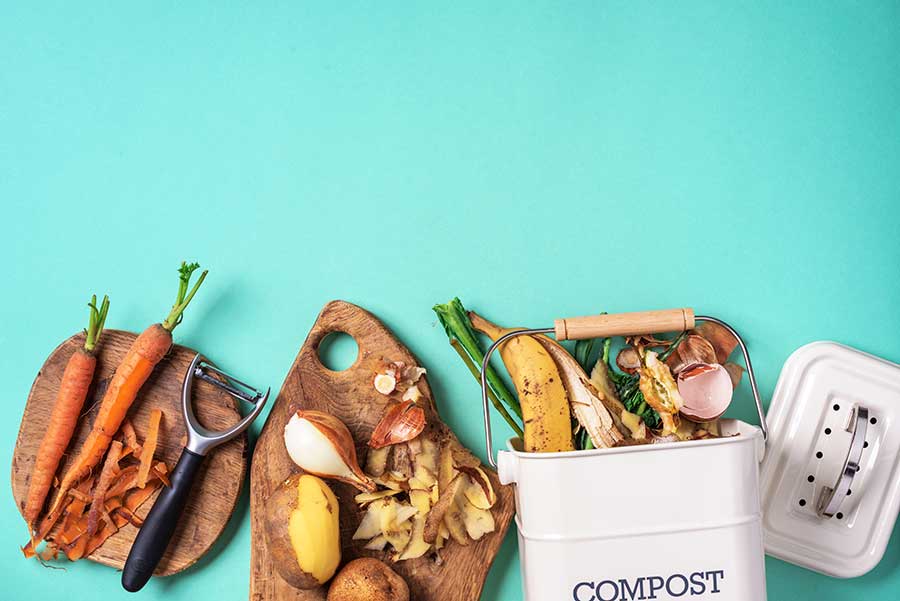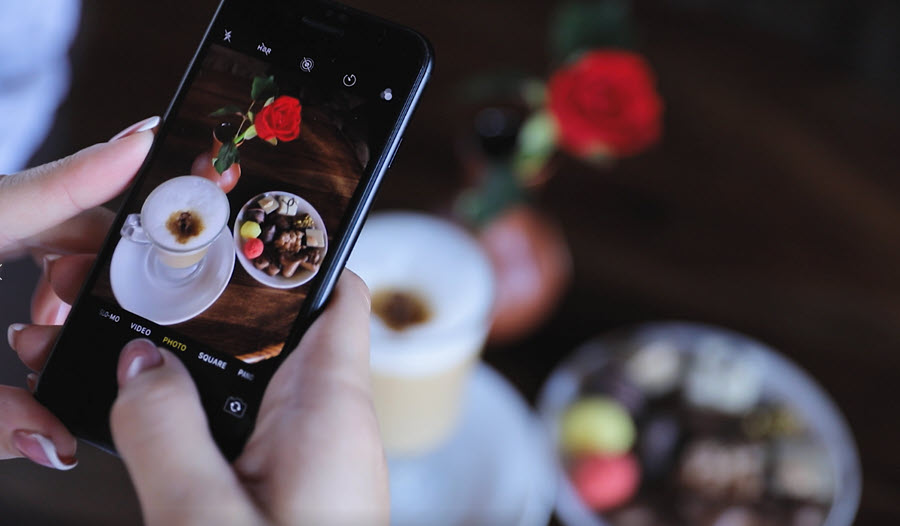

Here are a few tips for food photography as a chef:
Use natural light whenever possible: Natural light tends to be more flattering for food photography. Try taking your photos near a window or outdoors. If you need to use artificial light, use a diffuser to soften the light and reduce shadows.
Play with angles: Experiment with different angles to find the most visually appealing way to photograph your dish. Try shooting from above, at eye level, or from the side.
Style your food: Take the time to style your dish by arranging the ingredients and adding garnishes or props that complement the dish. This can help make your food look more appetising in the photograph.
Use a tripod: A tripod can help you get sharp, well-composed photos, especially if you’re shooting in low-light conditions.
Edit your photos: Editing your images can help bring out the best in your shots. Use photo editing software like Lightroom or Photoshop to adjust your images’ lighting, colour, and contrast.
Choosing the right angle for food photography is important because it can help you tell a story or convey a certain mood or emotion through your images. Here are a few tips for choosing the right angle for your food photos:
High angle: A high-angle shot is taken from above the subject and can effectively show off the overall composition of a dish or showcase the ingredients. This angle is often used in restaurant photography to show off the presentation of a dish.
Eye level: Shooting at eye level is a natural and neutral angle that allows the viewer to see the food as they would if they were sitting at a table. This angle is great for showing off the details and textures of a dish.
Low angle: A low-angle shot is taken from below the subject and can effectively create a sense of drama or intimacy. This angle can make the food look larger than life and can be used to highlight a key ingredient or feature of a dish.
Side angle: A side angle shot is taken from the subject’s side and can effectively show off the depth and dimension of a dish. This angle is often used to showcase the layers or components of a dish.
Ultimately, the right angle will depend on the subject of your photograph and the message you want to convey. Experiment with different angles and see what works best for your particular subject and composition.
Picking a hero object and surrounding it with complementary ingredients and props can add visual interest and tell a story with your food photography. Here are a few tips for using this technique:
Choose a hero object: The hero object is the main subject of your photograph and should be the show’s star. This could be the main ingredient, a finished dish, or a vital plate component.
Surround it with complementary ingredients: Choose ingredients and props that complement and enhance the hero object. For example, if the hero object is a piece of grilled meat, you might surround it with vegetables and herbs, a sauce, or a sprinkle of spices.
Use colour to your advantage: Use colour to create visual interest and balance in your photograph. For example, you might use colourful ingredients or props to contrast with the hero object or to add pops of colour to the scene.
Pay attention to composition: Consider the overall composition of your photograph and how the hero object and surrounding elements fit together. Use the rule of thirds, leading lines, and other compositional techniques to create a visually appealing and balanced image.
Using simple props and limiting your colour palette can effectively create visually appealing food photography. Here are a few tips for using these techniques:
Use simple props: Simple props can help add visual interest and context to your photograph without overwhelming the scene. Choose props relevant to the dish or ingredients, and avoid using too many props or clutter.
Limit your colour palette: Limiting your colour palette can help create a cohesive and visually appealing photograph. Choose a few colours that complement the hero object and use those colours consistently throughout the photograph.
Consider the mood: Think about the mood or emotion you want to convey with your photograph and choose props and colours that support that mood. For example, bright colours and playful props might be effective for a fun, summery dish, while subdued colours and rustic props might be more appropriate for a hearty, comfort food dish.
Dressing your food, or adding garnishes and other decorative elements, can be a great way to add visual interest and make your dishes look more appetising in photographs. Here are a few tips for dressing your food for food photography:
Use fresh ingredients: Choose fresh, vibrant ingredients for garnishes and decorations. These will look more appealing in the photograph and can help draw the eye to the hero object.
Think about balance: Consider the balance of colours and textures in your photograph and use garnishes to add visual interest and contrast. For example, you might use a crisp, green herb to balance a creamy sauce or a crunchy crumb to balance a soft, tender protein.
Use complementary flavours: Choose garnishes that complement the flavours of the dish. For example, if the hero object is a spicy dish, you might use cooling herbs or a yoghurt sauce as a garnish.
Keep it simple: Avoid using too many garnishes or decorations, as this can clutter the photograph and distract from the hero object. A few well-placed garnishes can be more effective than a cluttered, over-decorated dish.
Making your food look ready to eat is a fundamental goal in food photography, as it can help make your dishes look more appealing and delicious to the viewer. Here are a few tips for making your food look ready to eat in photographs:
Use natural lighting: Natural lighting can help make your food look more appetising by adding warmth and dimension to the photograph. Use natural light whenever possible or a diffuser to soften artificial light.
Use steam or condensation: Adding steam or condensation to your photographs can help make your food look more appetising and make it look like it’s just come off the stove or out of the oven. Before photographing, you can create steam or condensation by lightly misting your food with water.
Add finishing touches: Adding a final touch, like a sprinkle of herbs or a drizzle of sauce, can help make your food look more appetising and finished.
Style your food: Take the time to style your dish by arranging the ingredients and adding garnishes or props that complement the dish. This can help make your food look more appetising and ready to eat.
It’s important to avoid making your food look too staged or artificial in food photography, as this can make the photograph look less appetising and less relatable to the viewer. Here are a few tips for avoiding a staged look in your food photography:
Use natural lighting: Natural lighting can help make your food look more natural and less staged. Use natural light whenever possible or a diffuser to soften artificial light.
Avoid overly perfect compositions: Perfectly arranged, symmetrical compositions can look staged and artificial. Instead, try to create a more natural, asymmetrical composition by arranging your ingredients and props in a more organic, irregular way.
Use real ingredients and utensils: Using real ingredients and utensils, rather than props or substitutes, can help make your food look more genuine and less staged.
Avoid using too many props: Too many props or decorations can make your food look overly staged or contrived. Please keep it simple and use only a few relevant props to add visual interest to the photograph.
Here are a few tips for troubleshooting common food photography issues:
Poor lighting: If your photographs are too dark or have harsh shadows, try using natural light or a diffuser to soften the light. You can also use a reflector to bounce light back onto the subject and fill in shadows.
Lack of detail: If your photographs lack detail or are too blurry, make sure to use a tripod and a low ISO setting to reduce camera shake and noise. Try using a wider aperture (lower f-number) to increase the amount of light entering the lens and create a shallower depth of field.
Unappealing colours: If your photographs have unappealing colours or look washed out, try adjusting the white balance or colour temperature settings on your camera or editing the colours in post-processing. You can also use a colour checker or a colour chart to help you get accurate colours in your photographs.
Unappealing composition: If your photographs have an unappealing composition, try using the rule of thirds, leading lines, or other compositional techniques to create a more visually appealing image. You can also use different angles or viewpoints to change the photograph’s perspective.
If your food photographs are not displaying colours accurately, it can be frustrating and make your images less appealing. Here are a few tips for troubleshooting this issue:
Check your white balance settings: White balance refers to the colours of light in a scene and how your camera interprets them. If the white balance is off, your photographs may have a colour cast or the colours may look distorted. You can try adjusting the white balance settings on your camera or using a colour chart or colour checker to help you get accurate colours.
Use a colour checker or colour chart: A colour checker or colour chart is a tool that helps you get accurate colours in your photographs. You can photograph the chart or checker with your subject and then use it as a reference point in post-processing to adjust the colours in your photo.
Edit the colours in post-processing: You can use photo editing software like Lightroom or Photoshop to adjust the colours in your photographs. Make sure to use the colour adjustment tools sparingly and carefully, as over-editing the colours can make the picture look unnatural.
Use a colour-accurate monitor: Make sure your monitor is calibrated and accurately displays colours. This will help you better understand how the colours in your photographs will look on other devices.
Posting your food photographs regularly can be a great way to showcase your dishes and engage with your audience. Here are a few tips for regularly posting your food photographs:
Create a schedule: Create a schedule for posting your photographs and stick to it as closely as possible. This will help you stay consistent and build an audience over time.
Use hashtags: Use relevant hashtags when posting your photographs on social media platforms like Instagram, Twitter, or Pinterest. This will help more people discover your pictures and can help you build an engaged community.
Engage with your audience: Engage with your audience by responding to comments and interacting with other users. This can help build a community and encourage people to follow and share your content.
Experiment with different formats: Experiment with other formats, like photo grids, videos, or stories, to keep your content fresh and engaging.
